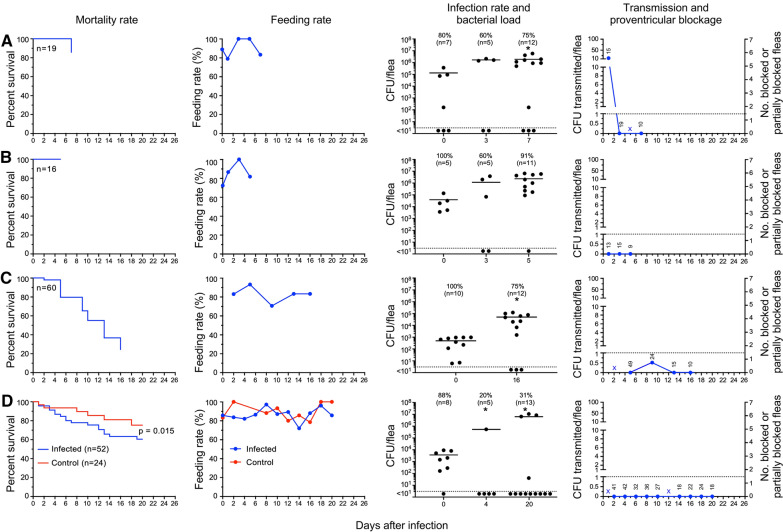Fig. 1.
P. irritans fleas infected using human blood and fed sterile human blood daily from day 1–2 to day 20 after infection. Survival rates, feeding rates (percentage of fleas that fed on a given day), infection rates, bacterial load per infected flea, transmission and proventricular blockage dynamics are shown for four independent experiments (A–D). A and B were short-term experiments in which only early-phase transmission was assessed. The starting number of infected fleas (n) is indicated on the survival graphs. The infection rates (%) at different times after infection and the number of individual fleas assayed (n) is indicated on the infection rate and bacterial load graphs, with the horizontal line marking the mean CFU per infected flea and the dashed line the level of detection for the CFU plate count assay. *, bacterial load per flea significantly greater than the day 0 count (p < 0.05). Transmission tests were done on the days indicated; the numbers on the transmission graphs are the number of infected fleas that fed on the test blood before it was plated, and the dashed line marks the level of 1 CFU recovered per infected flea bite. X indicates that fleas were fed but scheduled transmission test was not done due to disruption of the feeding membrane during blood collection. No evidence of partial or complete proventricular blockage was detected in any of the fleas in this group of experiments

